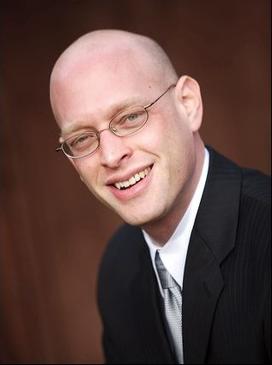Tiger of the Week: Mark Krumholz '98

Last week, 12 inmates at the Santa Cruz County Jail became algebra students, thanks in large part to Mark Krumholz ’98, an assistant professor in the astronomy and astrophysics department at the University of California, Santa Cruz. Krumholz worked with corrections officials and administrators at the UC Santa Cruz Extension to create the UC Santa Cruz Project for Inmate Education, which offers college-level courses that allow the prisoners to earn credit while serving time. He'll be teaching the course, along with a handful of UC Santa Cruz faculty and graduate students.
The UC Santa Cruz project is the third inmate education program that Krumholz has been involved with, and the second that he's started. As a post-doctoral researcher at Princeton, he created Princeton Project Inside, now known as the Prison Teaching Initiative, which sends Princeton volunteers to two prison facilities to teach courses for credit at local community colleges. (Click here to read PAW's April 2, 2008, story about the program.)
In Santa Cruz, one of Krumholz's biggest challenges was location. All of California's major prisons are at least a two-hour drive from campus, and relatively few of the inmates in the nearby county jail remain there long enough to complete a full semester of coursework. But administrators at the jail were able to identify enough promising candidates to fill this summer's class.
Teaching inmates has been a rewarding experience, according to Krumholz, and it provides a welcome break from the computer models of the cosmos that occupy much of his time. "I need something other than research if I want to maintain my sanity," he said. "Community service is part of what makes me a happy, well-adjusted individual."
In addition to community service, Krumholz has an impressive research résumé. He studies how stars form and the physical mechanisms that determine things like the rate of formation and the size of the stars that are created. Since arriving at UC Santa Cruz, Krumholz has been the lead author of a paper in Science that explained how massive stars are able to form without blowing away the clouds of gas and dust that feed their growth. He also was one of 118 young professors nationwide to earn a 2009 Sloan Research Fellowship.
(Photo courtesy Mark Krumholz ’98)











No responses yet